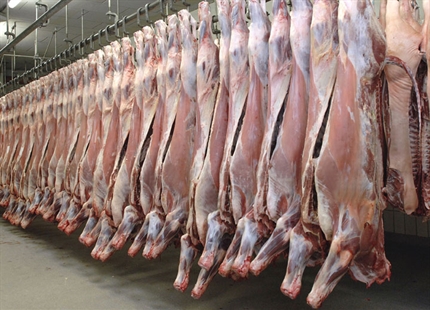
Cold storage humidification & humidity control
When air enters a cold store, its moisture content drops as its temperature falls below dew point and water condenses on to the cold surfaces, particularly the cooling coils in the refrigeration system.
As the air circulates around the chill store it warms, reducing its relative humidity. The warmer air draws moisture from any surface it can, including the produce itself. This leads to product weight loss - as much as 20% - and cells become less turgid, affecting the appearance, quality and shelf-life of the produce, all of which reduce the value of the stock.
The solution? Raise the relative humidity to a level that's in equilibrium with the produce.
Optimal conditions vary according to the specific type of fruit, vegetables, flowers or other food product being stored but, typically, a humidity of around 95%RH at a temperature just above freezing is needed but, even produce stored in warmer conditions benefit from a humidity level around 75%RH. The required moisture is introduced directly into the air, evenly throughout the store.
The story doesn't stop there. Commercial markets and the many modern distribution depots run by supermarket chains benefit from effective humidification, as do chilled display cabinets and open counters, helping to ensure that produce quality is maintained right through the supply chain.
Get a FREE 10-point guide to improving productivity with humidity in food manufacturing
This document presents an introductory step-by-step approach for food production managers on how to best manage humidity levels to optimise production, reduce waste and improve profitability.
Benefits of humidification in food and produce cold stores include:
- Raising the relative humidity inhibits moisture loss.
- The right humidity level ensures that product quality is maintained.
- Fresh, just picked appearance increases value.
- Improved profitability through maintained product weight.
- Longer storage and greater shelf life reduce waste.
- Direct room humidification ensures the right humidity level evenly around the store, maintaining produce quality throughout.
- Close humidity control means the right humidity for the right produce.
- Condair - a choice of in-room humidification systems that meet the exacting requirements of cold stores.
- Bell AG
- Arla Foods
- LIDL
- Dubai Flower Store
- Freelance Refrig & Air Con
- Woolworths
- Wide Bay Seedlings
- Lantmännen-Hatting
- HB Refrigeración
- Arnott's Biscuits
- Beauvais
- Keller Fruechte & Gemuese

Brochure download
Find out how to improve cold store productivity with humidity control
You may also be interested in...

Vertical farms humidity control

Humidity control for bakeries

Humidity control for cheese curing

Abattoir humidification

Tea production humidification

Crop storage humidification

Mushroom growing humidification

